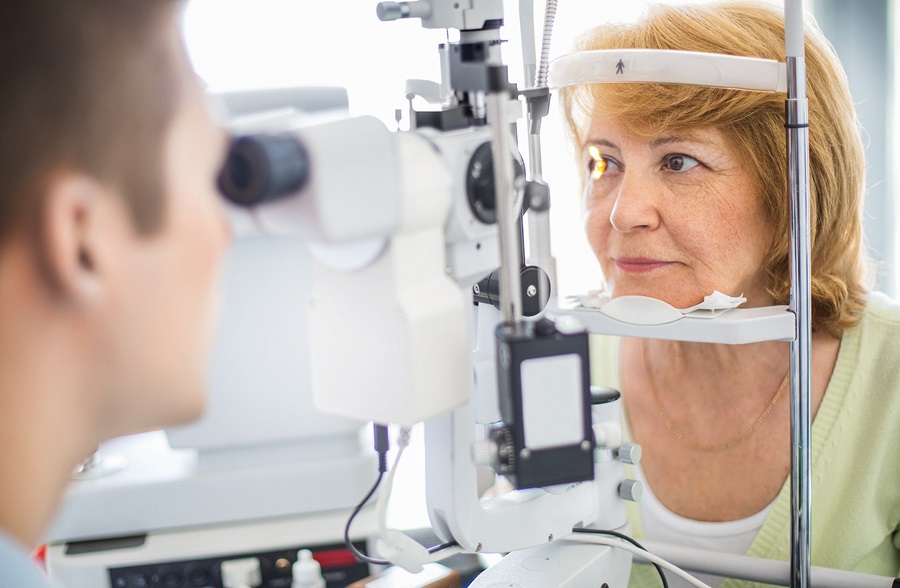- Home
- Mind & body
- How does diabetes affect your eyes?
At CBHS we help you manage your health challenges. We believe in offering you the services, support and tools you need to live your best life.
Our Better Living Programs are available to support eligible members towards a healthier lifestyle. Each Better Living Program is subject to its own eligibility criteria.
Contact us for more information and to confirm your eligibility for a program.
How does diabetes affect your eyes?

At some point after diagnosis, many people with diabetes experience changes to their vision. Diabetes (type 1 and 2) can affect the blood supply to the eyes, which may contribute to the cataracts, glaucoma and diabetic retinopathy developing. So, for those with diabetes, it’s particularly important to have regular eye examinations to monitor eye health and detect any issues early.
What is diabetic retinopathy?
High blood sugar levels can damage the fine blood vessels of the retina, the light-sensitive lining at the back of the eye. This can result in blockage, blood leakage, swelling and inflammation, all of which can affect the vision.
The condition is called diabetic retinopathy and it happens in two stages:
• Non-proliferative or background retinopathy – This is the early stage when vision is not permanently lost but detection is important, to help prevent things getting worse. At this stage the vision may become hazy and straight lines appear bent.
• Proliferative retinopathy – This stage is more serious and needs to be treated as soon as possible to prevent serious vision loss. Higher than normal blood glucose levels lead to the growth of new, very fragile blood vessels in the retina. They are more prone to bleeding which can cloud the vision, cause scarring and even lead to retinal detachment.
What are the symptoms of diabetic retinopathy?
Symptoms vary from person to person, but they include:
• Blurred vision
• Floaters and spots
• Blank or missing areas in the vision
• Double vision
• Difficulty seeing well at night
• Problems with balance, reading, watching television and recognising people
• Being overly sensitive to glare.
If you have any of these symptoms, whether you have diabetes or not, you should have an eye examination as soon as possible.
How is it diagnosed?
Diabetic retinopathy is diagnosed when your optometrist picks up damage to the back of the eye in the form of small haemorrhages and leaky blood vessels. People with diabetes should have an eye examination at least once every 12 months, and more frequently if there are any early signs of diabetic retinopathy developing. Once your pupils have been dilated with eye drops to give a clearer view, your optometrist can perform a very thorough examination of the retina. People with diabetes who are eligible Medicare cardholders will generally be covered for this examination.
If you visit an OPSM optometrist, they have access to ultra-wide digital retinal cameras which offer a 200-degree view of the retina, which is four times wider than a regular Digital Retinal Scan^. This technology can help detect diabetic retinopathy and record the appearance of the retina and monitor over time for any subsequent changes.
What is the treatment for diabetic retinopathy?
Good management of blood glucose levels may help delay the onset of diabetic retinopathy. But once it has been detected, your optometrist may refer you to an eye surgeon for laser treatment.
Lasers can be used to kill the newly grown blood vessels in the retina, causing them to clot. The treatment cannot restore lost sight, but it is most effective when diabetic retinopathy is in its very early stages, which is why early detection is so important.
More choice in the CBHS Choice Network
Thanks to our partners, OPSM for this content. Did you know that OPSM now is a CBHS Choice Network provider? The Optical Choice Network consists of optometrists and optical dispensers who have agreed to offer a selection of quality frames, lenses and contact lenses to CBHS members who hold Extras cover with little or no out-of-pocket expenses.

^ Compared to a standard and more common 45 degree Digital Retinal
All information contained in this article is intended for general information purposes only. The information provided should not be relied upon as medical advice and does not supersede or replace a consultation with a suitably qualified Health Care Professional.
Health and wellbeing
programs & support
You Belong to More with CBHS Hospital cover:
- Greater choice over your health options including who treats you
- Get care at home with Hospital Substitute Treatment program
- Free health and wellbeing programs to support your health challenges
Live your healthiest, happiest life with CBHS Extras cover:
- Benefits for proactive health checks e.g. bone density tests, eye screenings
- Keep up your care with telehealth and digital options
- Save on dental and optical with CBHS Choice Network providers
